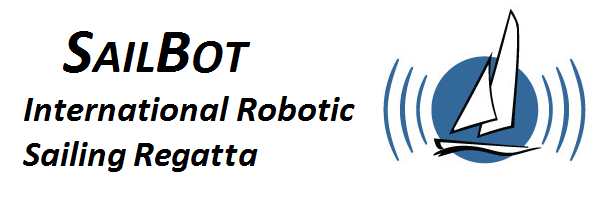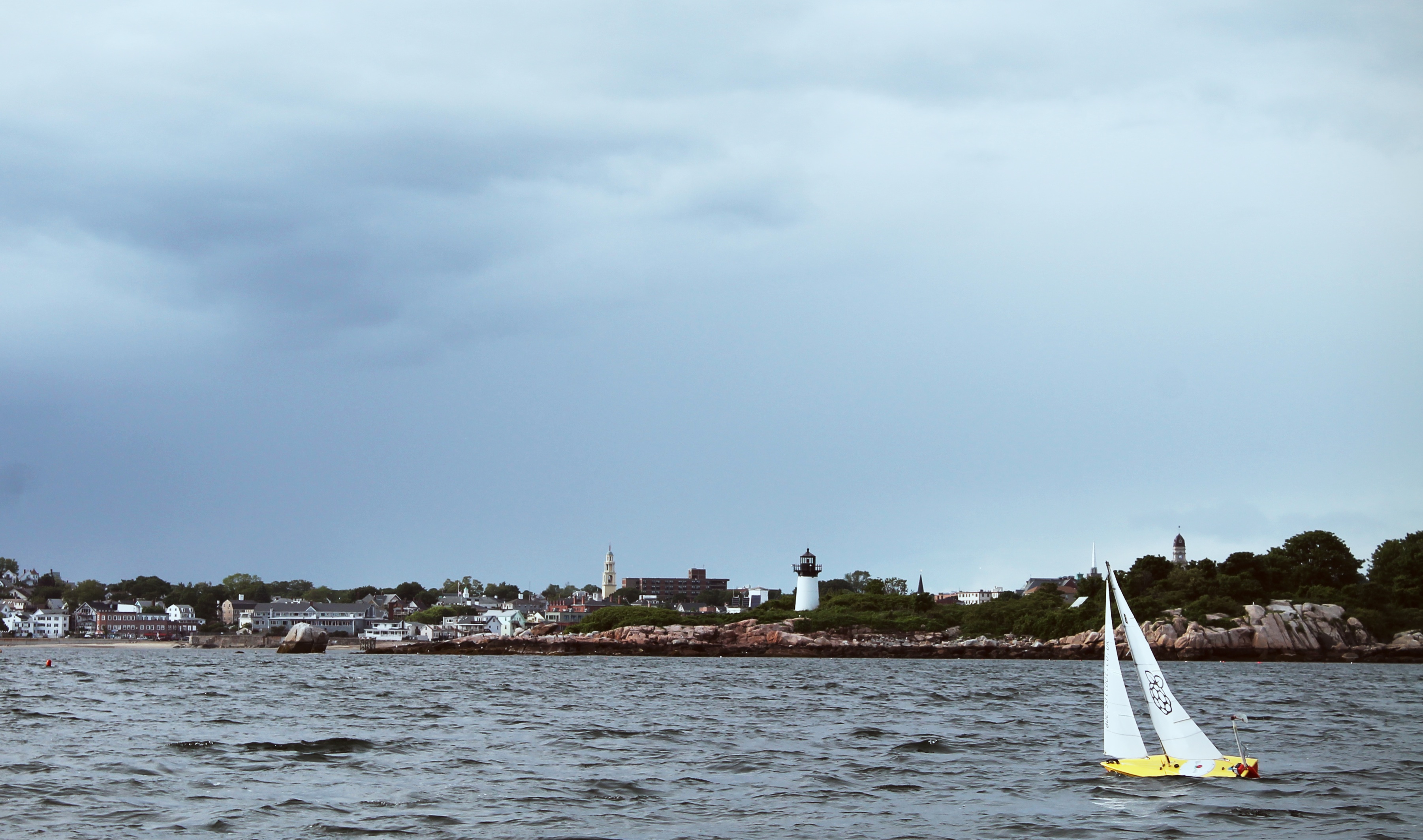Quick links:
- MaxiMOOP CAD files download link
- Paper describing the MaxiMOOP
About the MaxiMOOP:
The 1.2 meter (4-foot) long MaxiMOOP is a small boat designed as a joint project between the U.S. Naval Academy and Aberystwyth University specifically for autonomous sailing. It differs from the typical remote-controlled model boats that are designed for racing (or scaled down from full-size sailboats) in that it carries a much larger payload (to handle the computers, larger batteries and solar panels) and was designed for directional stability, durability, ease of construction, one-person logistics (a MaxiMOOP weighs about 20 kg/45 lbs) and flexibility in rig and rudder choices.
As of July 2023 about 34 MaxiMOOPs have been built or are in construction world-wide. While not as fast as a 2-meter SailBot, they do reasonably well competing or voyaging. ABoat Time averaged 2 knots on her four ocean voyages. Bearly Assailable sailed over 1300 NM in 2020. With a racing rig an average speed of 2.5 knots is common. Dewi (below) from Aberystwyth University has done quite well in multiple events. The 2nd and 3rd Place finishers at the 2018 SailBot regatta were both MaxiMOOPs!
For more information see this paper presented at the 2014 IRSC. Since that paper was written, MaxiMOOPs have accumulated over 3000 offshore miles of sailing. The proposed design modification at the paper’s end became the MaxiMOOP V3, which differs from the V2 design by carrying almost twice the payload with a slightly deeper keel. The speeds of the V2 and V3 are similar. Shown below is a USNA test boat with a light air racing rig.
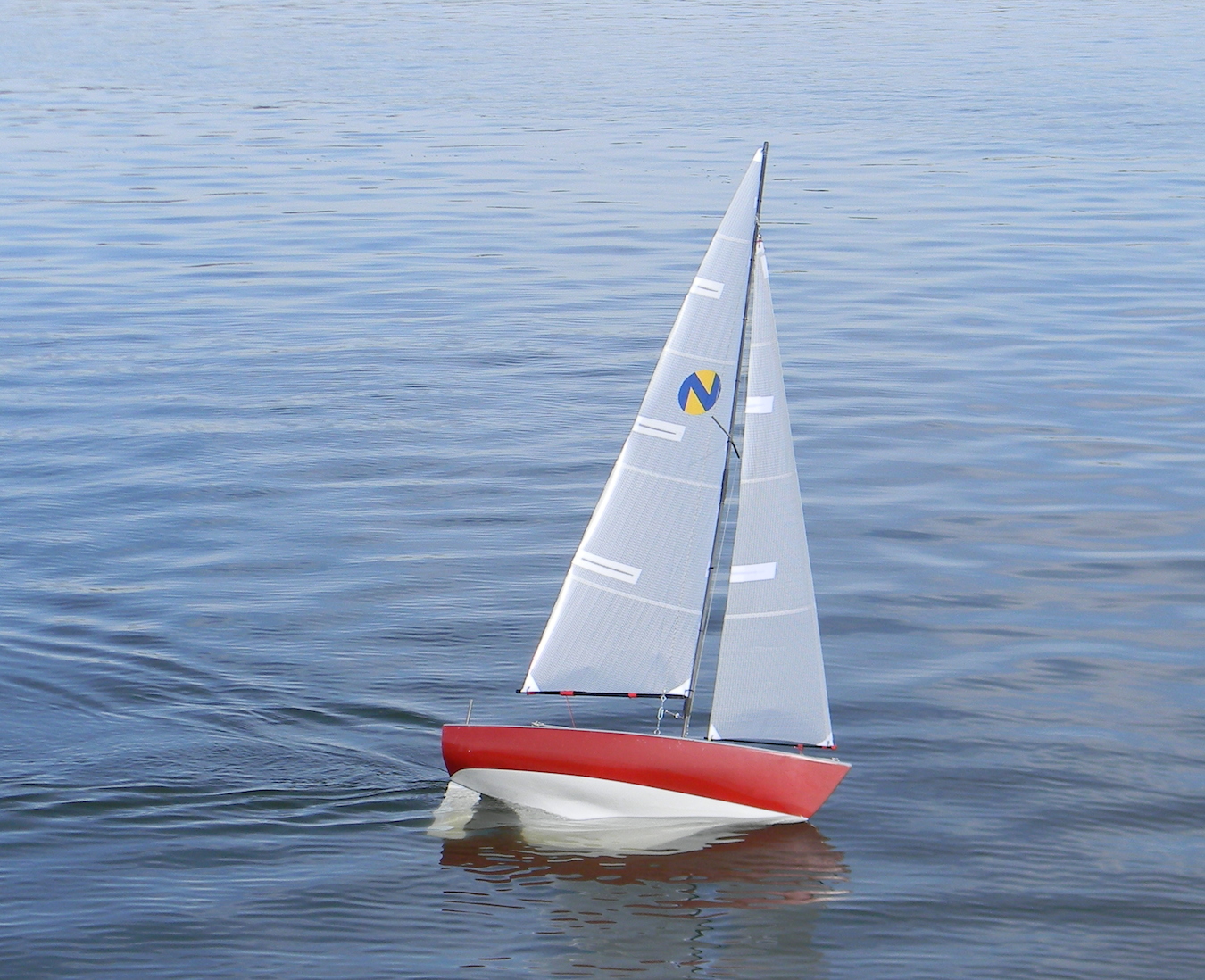
This file contains the 3D iges file of the V3 MaxiMOOP. Hull molds (V2 or V3) are also located in Aberystwyth and Mystic, CT for those interested in building one. There are no royalty charges for using the design.
To be called a “MaxiMOOP” the basic hull shape (V2 or V3) cannot be significantly modified to increase length, beam or draft in a manner that will improve performance. There are no restrictions on the steering method, or rigs, but the boat must be propelled solely by the wind.
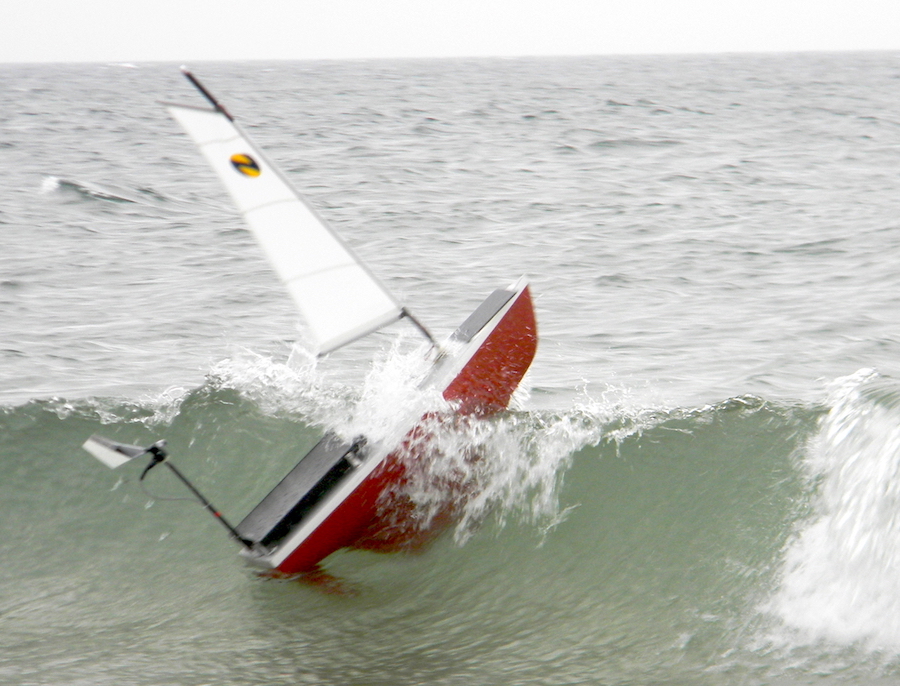
ABoat Time at the start of her first ocean voyage. She sailed about 250 NM before a scallop dragger made her the “catch of the day”.
As an initial autonomous sailboat platform the MaxiMOOP is a good compromise between portability, performance, flexibility, ease of construction, seaworthiness and payload.
Teams new to autonomous sailing develop their own strategies to achieve their goals. It is extremely challenging for a small team to build, program and sail one of these in a single academic year! In fact, it might never have been done! The successful small teams use a long-term approach with intermediate goals, perhaps the first year’s goal having a boat sailing under remote control with autonomous sail control, and then adding navigation the next year and experimenting with different rigs, sensors or controls.
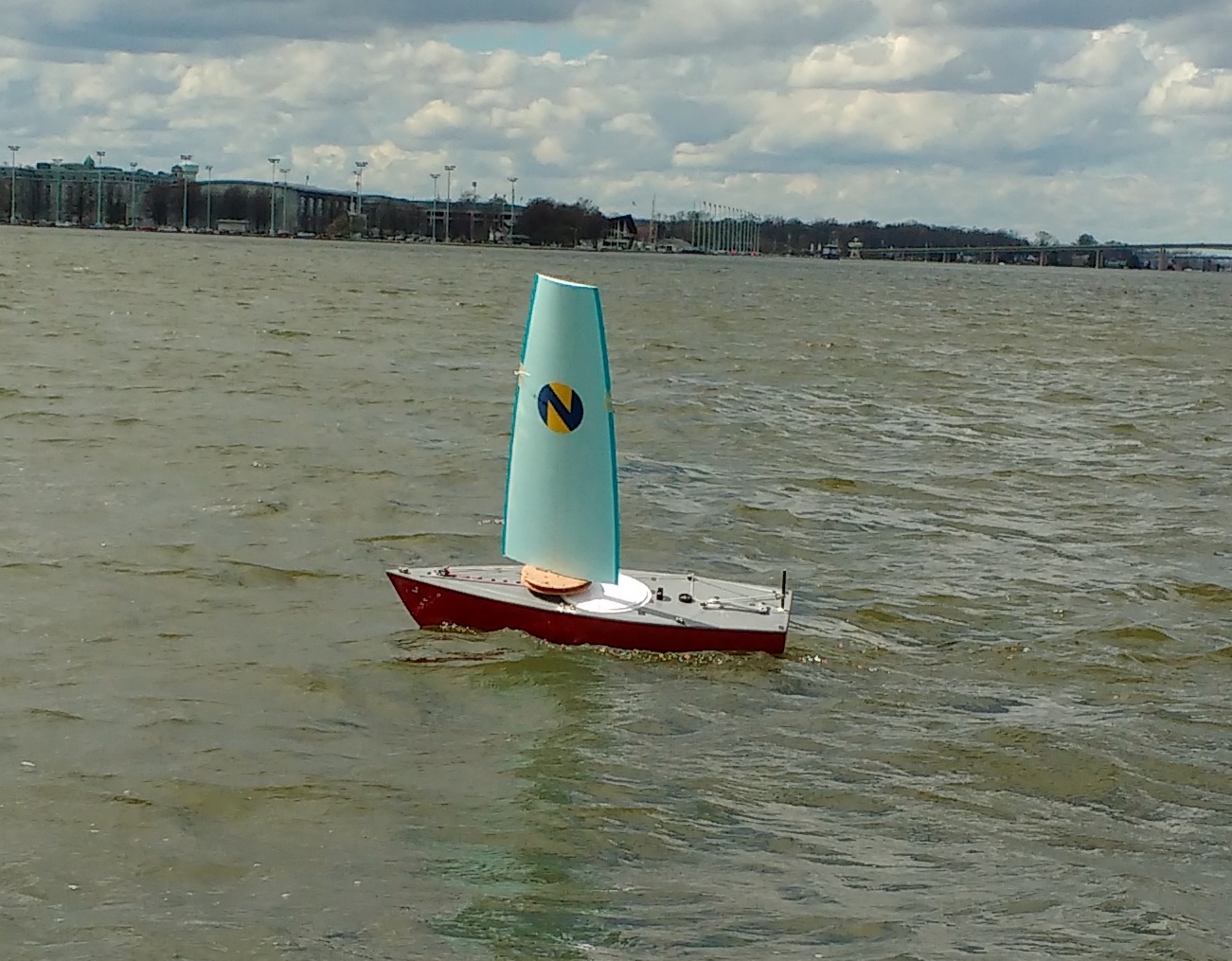 Trying out the asymmetric wing sail concept on “Mid Life Crisis”, the Naval Academy’s MaxiMOOP test platform. The new wing was substantially faster than the symmetric wing.
Trying out the asymmetric wing sail concept on “Mid Life Crisis”, the Naval Academy’s MaxiMOOP test platform. The new wing was substantially faster than the symmetric wing.
Larger teams can accomplish more but require even better management skills. In this case there is often a “Boat Team” that builds the boat and gets it sailing under remote control (noting that a boat that does not sail well under remote control will almost never sail well under autonomous control) and a “Systems Team” that develops the systems. Almost all systems development can be done in the lab or on a mobile cart in a parking lot on a mockup representing the boat’s dimensional boundaries. The two teams come together about a month before the competition to integrate, develop and refine the on-the-water performance.
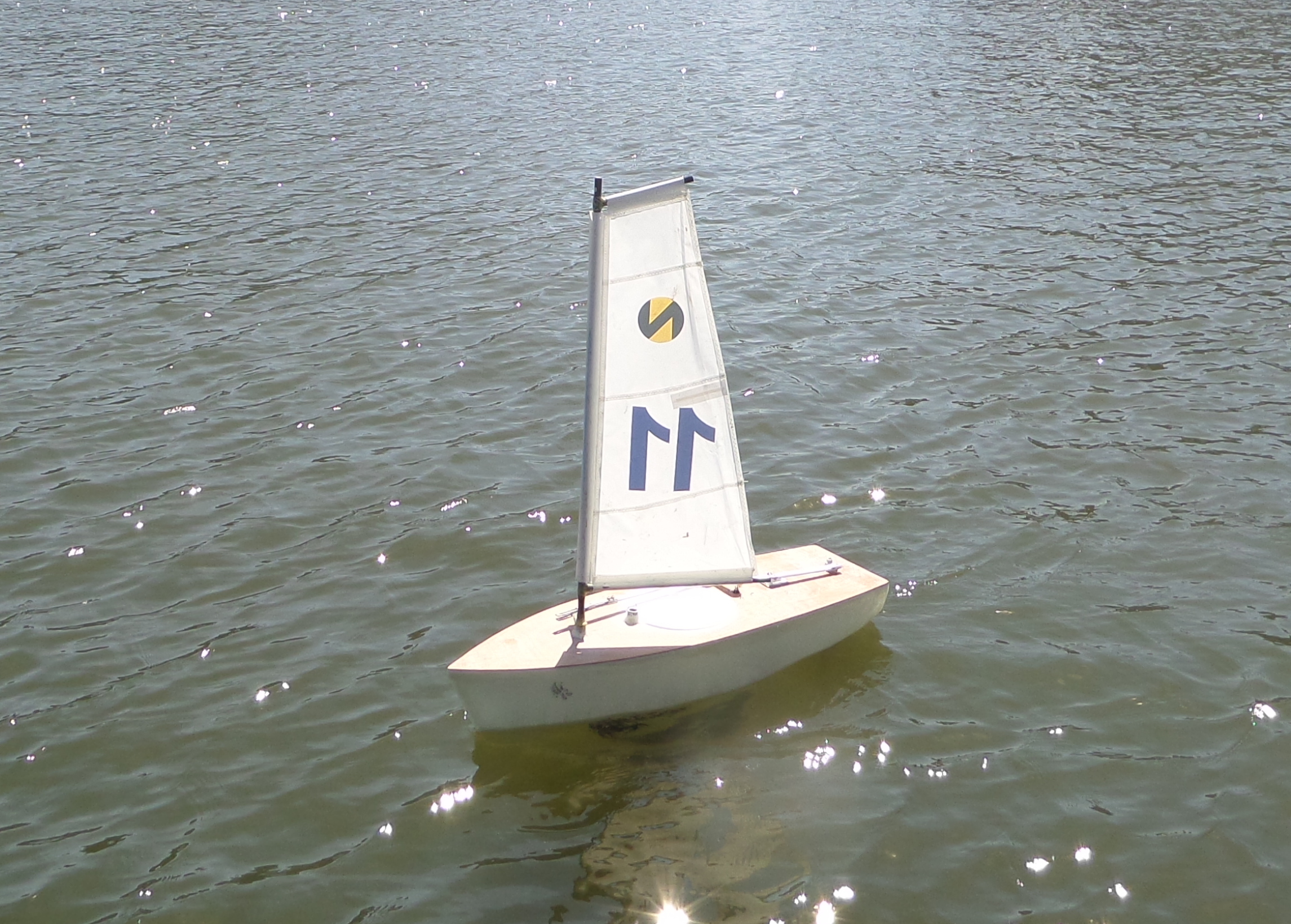
MMv3 sea trial
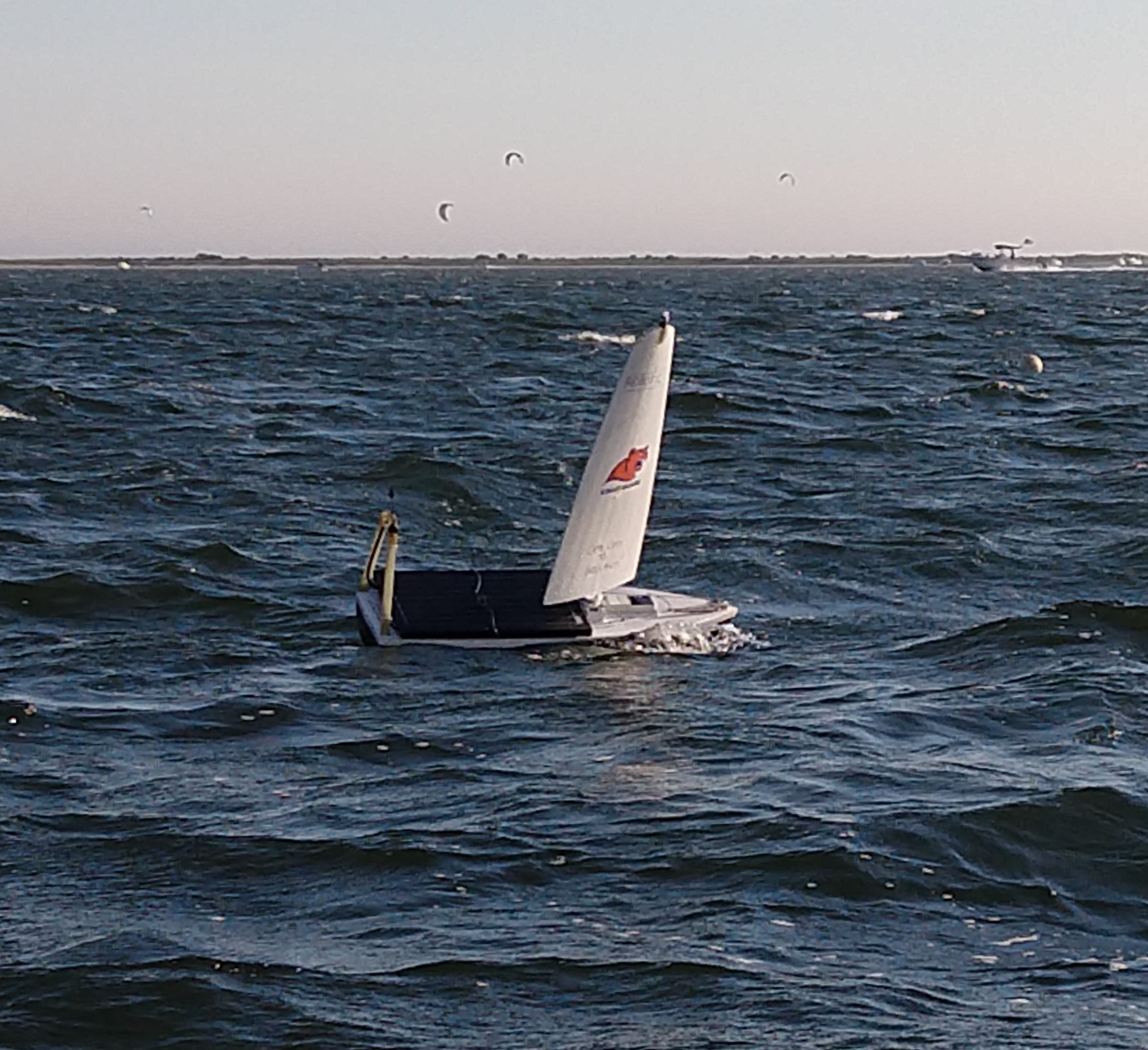
Bearly Assailable during final sea trials before starting her Atlantic crossing attempt. Unfortunately she was hit by three hurricanes. Four days after the third one she stopped broadcasting her position.
Is a MaxiMOOP a good idea for every team? Perhaps. The tried-and-true design works well and can be a test platform for new programming. Using a known platform means a team will be able to more easily decipher what might be causing poor sailing. Teams with no naval architecture experience can focus on their strengths. The design’s size is small enough for one person to deploy the boat for testing. However, once a team has mastered their programming, designing and building their own hull is a rewarding challenge!
